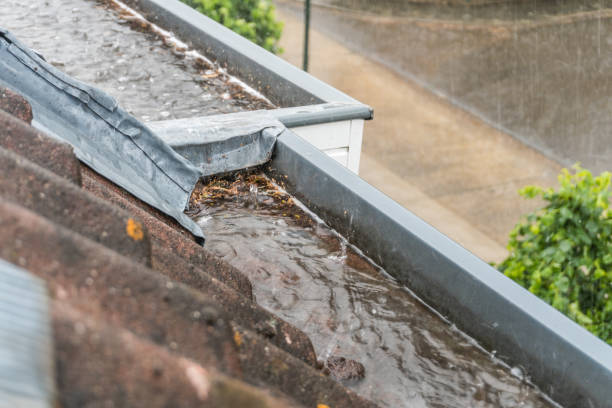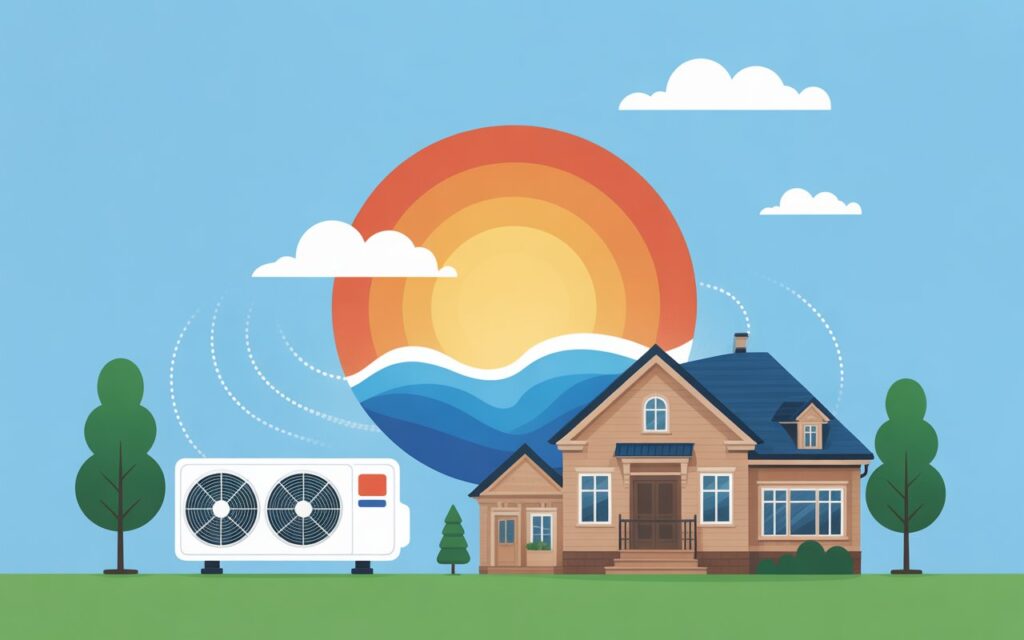uPVC (unplasticized polyvinyl chloride) gutters have become popular due to their durability, low maintenance, and resistance to rust and corrosion. However, despite these advantages, they are not immune to problems over time. In this blog post, we’ll explore 10 common issues with uPVC gutters and offer solutions to fix them.
1. Clogging Due to Debris Accumulation
One of the most common problems with uPVC gutters is clogging due to debris like leaves, twigs, and dirt. Over time, this buildup can block the flow of water, leading to overflowing gutters and potential damage to the house’s foundation or walls.
To fix this, the best approach is regular maintenance. Install gutter guards to prevent debris from accumulating and clean the gutters at least twice a year. If debris is already blocking the gutter, remove it manually using a scoop or garden trowel, then flush the system with a hose to ensure proper water flow.
2. Sagging Gutters
uPVC gutters can begin to sag if they are not properly supported, especially when water accumulates or debris is not cleared regularly. This can result in improper water drainage and potential structural damage.
To resolve this issue, inspect the gutter brackets that hold the gutter in place. Replace any broken or bent brackets, and make sure they are spaced properly—typically every 1 meter or 3 feet apart. Also, make sure the gutter has the correct slope towards the downspout to ensure water flows smoothly.
3. Leaks at the Joints
Leaks at the joints of uPVC gutters are another common problem. Over time, the joints between sections can become loose due to wear and tear or improper installation, leading to water escaping from these weak points.
To fix leaking joints, first, inspect the areas where the leaks occur. You may need to disassemble the joint, clean it thoroughly, and apply a uPVC gutter sealant. Make sure the sections are reconnected tightly to avoid future leaks. Regularly checking these joints during routine maintenance can prevent issues from escalating.
4. Cracks and Splits
uPVC gutters, while durable, can develop cracks and splits over time due to exposure to harsh weather conditions or physical impact. These cracks can cause leaks, damaging the surrounding areas of your home.
To repair cracks, small ones can be sealed using a silicone-based sealant. However, larger cracks or splits may require a replacement of the damaged section. It’s also important to check for the underlying cause, such as heavy debris or extreme temperature changes, and address those to prevent future cracks.
5. Discoloration
Another issue that homeowners often face with uPVC gutters is discoloration. Exposure to sunlight and the elements can cause the gutters to fade or develop stains, which can detract from the appearance of your home.
The solution for discoloration is to regularly clean your gutters with a mixture of water and mild detergent. In some cases, you might need a specialized uPVC cleaner to restore the gutters to their original color. For long-term prevention, consider applying a UV protectant that helps resist the effects of sun exposure.
6. Gutters Pulling Away from the Roof
When uPVC gutters pull away from the roof, it is often due to loose or damaged brackets, screws, or improper installation. This can lead to improper water drainage and potential damage to the house’s eaves and fascia.
To fix this problem, check the brackets and screws that hold the uPVC rainwater gutter in place. Tighten any loose screws and replace any that are missing or damaged. If the gutter has been incorrectly installed, it may be necessary to rehang the entire section to ensure proper alignment and support.
7. Water Pooling Inside the Gutter
Water pooling inside uPVC gutters can occur due to poor installation or an incorrect slope that prevents water from flowing to the downspouts. This can lead to overflows and damage to the fascia and siding of the house.
To address water pooling, you’ll need to check the slope of the gutter. Gutters should have a slight downward pitch, typically 1/4 inch for every 10 feet, toward the downspout. If the pitch is incorrect, adjust the brackets to achieve the proper slope, ensuring smooth water flow.
8. Gutters Becoming Detached During Heavy Winds or Storms
During heavy winds or storms, uPVC gutters can become detached from their brackets or downspouts if they are not securely fastened. This can cause extensive damage to your home if not addressed promptly.
To prevent this issue, ensure that all brackets, screws, and fasteners are secure and in good condition. Regularly inspect the gutters, especially before the storm season, and reinforce any weak points. Installing wind braces can also add extra security to the gutters, keeping them attached during high winds.
9. Overflowing Gutters
Overflowing gutters can occur when the downspouts are blocked or the gutters are too small to handle the volume of water flowing off the roof. This can lead to water spilling over the sides and causing damage to the foundation, walls, and landscaping.
To fix overflowing gutters, first, check the downspouts for blockages and clear them if necessary. If the gutters are too small, consider replacing them with larger ones that can handle a greater volume of water. You can also install additional downspouts to improve water drainage.
10. Frozen Gutters in Winter
In colder climates, uPVC gutters can freeze during winter, leading to ice dams. Ice dams prevent proper drainage and can cause water to back up under the roof shingles, leading to leaks and potential water damage inside the home.
To prevent frozen gutters, make sure your gutters are clear of debris before winter starts. Installing heating cables inside the gutters can also help keep the water flowing during freezing temperatures. Proper attic insulation can also reduce the chances of ice dams forming by preventing heat from escaping through the roof.
By being aware of these common problems and knowing how to fix them, you can extend the life of your uPVC gutters and prevent costly repairs. Regular maintenance and timely repairs will ensure that your rainwater gutter Kerala continue to function efficiently, protecting your home from water damage year-round.









